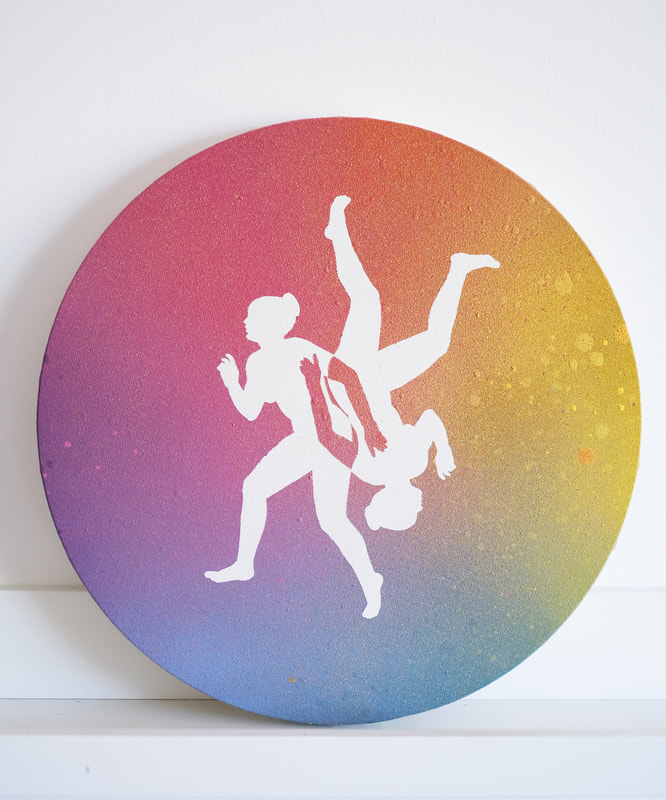|
Memory Thief (acrylic paint on 12” circular canvas, ©2023 Erin Kuhn) is a part of ongoing work exploring the erasure of queer identity in culture. On that topic, I read a really fascinating op-ed titled Don’t say gay — The erasure of queerness in art by Ignacio Darnaude. I’ve highlighted a few words below, to read in full: https://wehoville.com/2022/11/12/ignacio-darnaude-dont-say-gay-the-erasure-of-queerness-in-art/
If an artist is heterosexual, such as Picasso, exhibitions may disclose everything you always wanted to know about his female muses but, up until recently, if you attempted to bring up the impact of an artist’s queerness in their work, the museum’s response was usually that such talk was “irrelevant” or “reductive.” Artist Doron Langberg warns: “In art, depictions of heterosexual desire can represent war, peace, God, anything you want, but the erotic images constructed by queer artists are immediately pigeonholed as pornographic to straight eyes.” Philip Kennicott, the Pulitzer Prize-winning art critic for The Washington Post, summarized it beautifully: “The art world needs to confront a long record of hiding the outstanding contributions of queer artists, keeping them in the closet.” Update: Here is my statement for this piece, and ongoing work relating to the erasure of queer identity through my art: Queer identity has frequently faced deliberate erasure from cultural narratives, museums, and historical records. This historical erasure is all the more distressing considering the transformative role that LGBTQ+ artists have played throughout its history. This double standard is evident in how museums often provide in depth examinations of the personal lives and muses of heterosexual artists, while historically dismissing discussions about the impact of an artist's queerness in their work as ‘reductive’ or ‘irrelevant.' Bi erasure and the marginalization of queerness perpetuates harmful stereotypes and denies individuals their rightful recognition and representation. It hinders progress and trivializes key supporting information about artists and historical figures that is otherwise celebrated and embraced for heterosexuals. For example, the intimate relationship between Robert Rauschenberg and Jasper Johns was excluded from museums half a century. After briefly being highlighted in an exhibit in 2010, in 2017 MoMA referred to them as “friends in dialog with each other.” MoMA chose to highlight the offspring of Rauschenberg’s child from a much shorter marriage with a woman. It is challenging enough to document and preserve queer history and art without anthropologists and historians purposefully diminishing relationships out of concern for controversy and backlash. This perpetuates a culture that systematically hinders visibility and representation for queer artists. The absence can perpetuate stereotypes and limit the understanding of LGBTQ+ experiences and contributions.
0 Comments
Leave a Reply. |
Erin KuhnSharing info about upcoming events, links to press about my work and expressing my thoughts behind my art. ArchivesCategories |

 RSS Feed
RSS Feed
